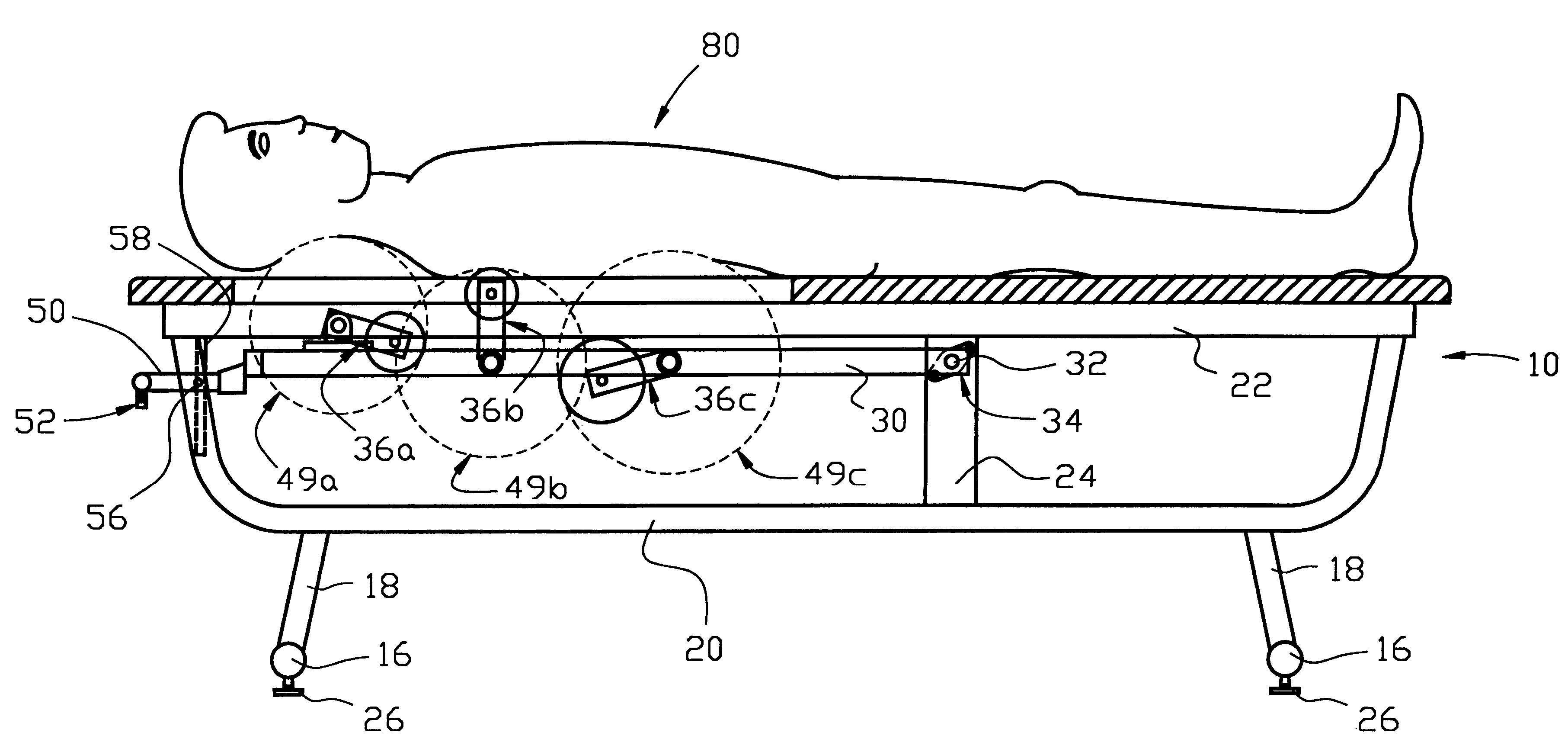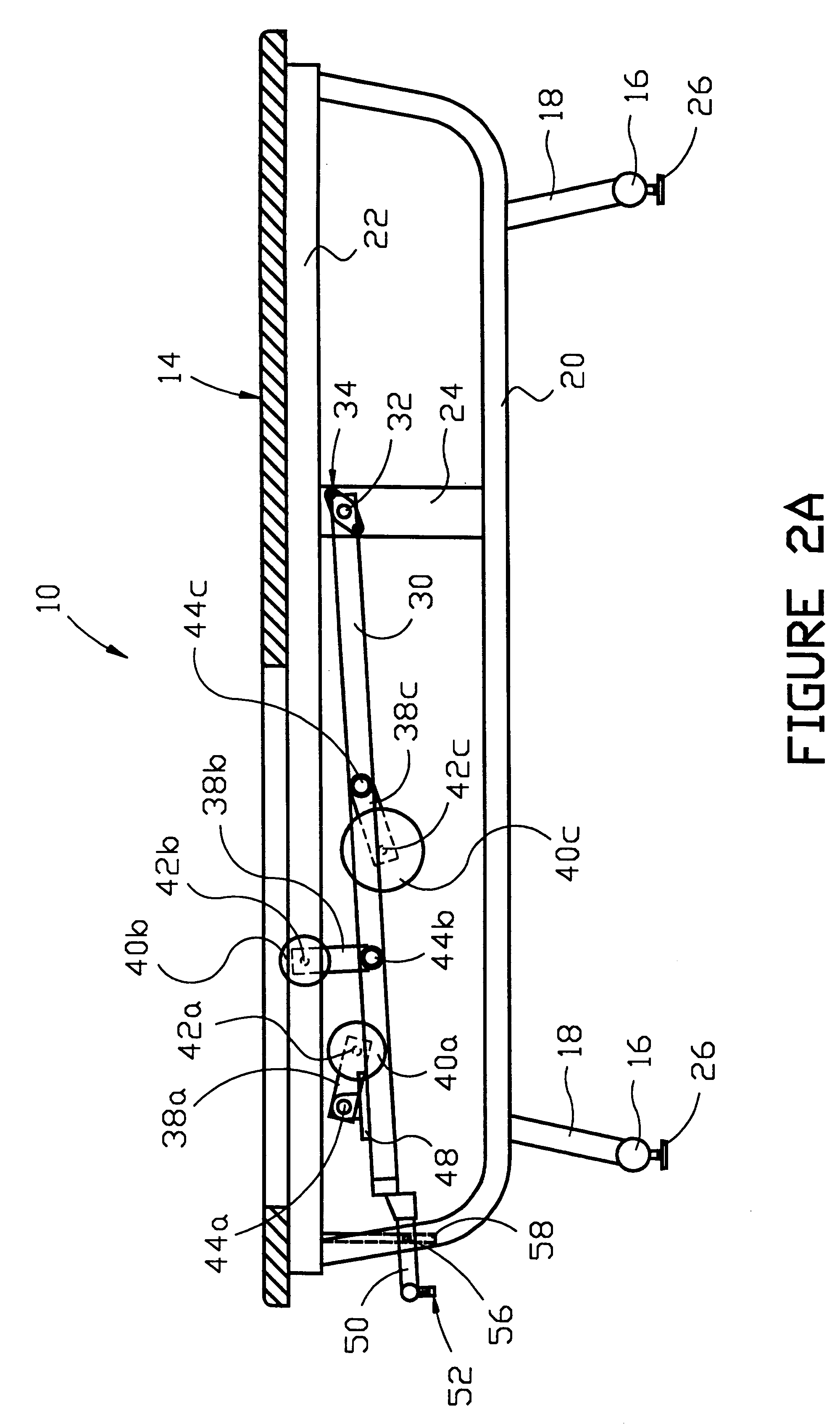Therapeutic massage table
a massage table and roller technology, applied in the field of therapeutic massage tables, can solve the problems of complex reciprocating mechanisms, high construction and operation costs of conveyor-type devices, and increased mechanical failure risk, and achieve the effect of simple construction
- Summary
- Abstract
- Description
- Claims
- Application Information
AI Technical Summary
Benefits of technology
Problems solved by technology
Method used
Image
Examples
Embodiment Construction
A preferred embodiment of the invention is illustrated in the drawings. As shown in FIG. 1, therapeutic massage table 10 includes frame 12, which is adapted for supporting a top 14 upon which a patient may lie or recline for treatment. Frame 12 is preferably provided in the form of tubular steel or other suitable material, includes front and rear base portions 16 and leg portions 18 (see FIGS. 2 and 3), left and right main supports 20 and top supports 22, and center support 24 (see FIGS. 2 and 3), the purpose and function of which shall be subsequently explained. Base portions 16 of preferred frame 12 are also provided with leveling feet 26, which are adjustable to level the table on the floor. Frame 12 should be designed so as to support the weight of a patient seeking treatment. Top 14 is preferably comprised of a board that is preferably made of wood, plastic or metal and covered with padding and a soft cover of leather or vinyl material (not shown) to insure the comfort of the p...
PUM
 Login to View More
Login to View More Abstract
Description
Claims
Application Information
 Login to View More
Login to View More - R&D
- Intellectual Property
- Life Sciences
- Materials
- Tech Scout
- Unparalleled Data Quality
- Higher Quality Content
- 60% Fewer Hallucinations
Browse by: Latest US Patents, China's latest patents, Technical Efficacy Thesaurus, Application Domain, Technology Topic, Popular Technical Reports.
© 2025 PatSnap. All rights reserved.Legal|Privacy policy|Modern Slavery Act Transparency Statement|Sitemap|About US| Contact US: help@patsnap.com



